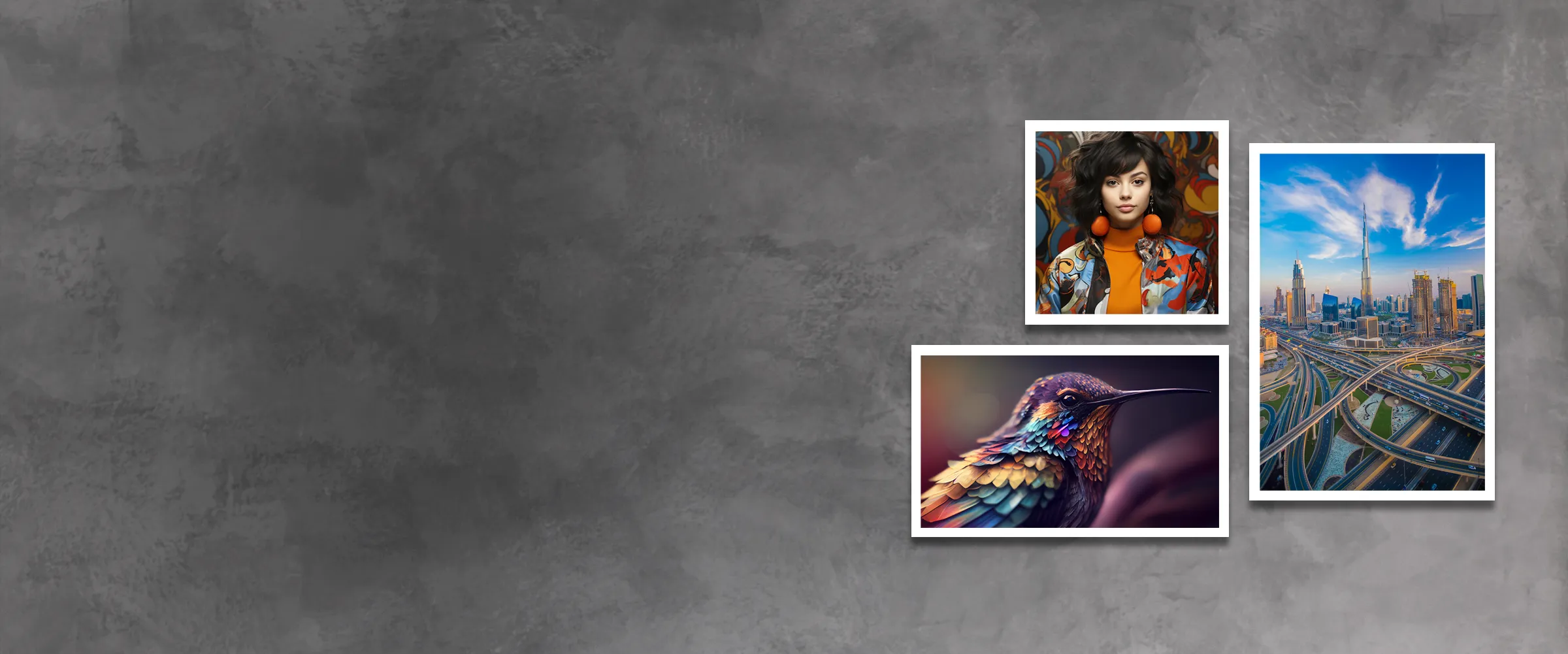Fine Art Prints
Fine Art Prints by Pro Lab are also known as Giclée Prints. Fine Art Prints are printed with high-quality archival pigment-based inks using a 12-color process to output ultra high resolution images.
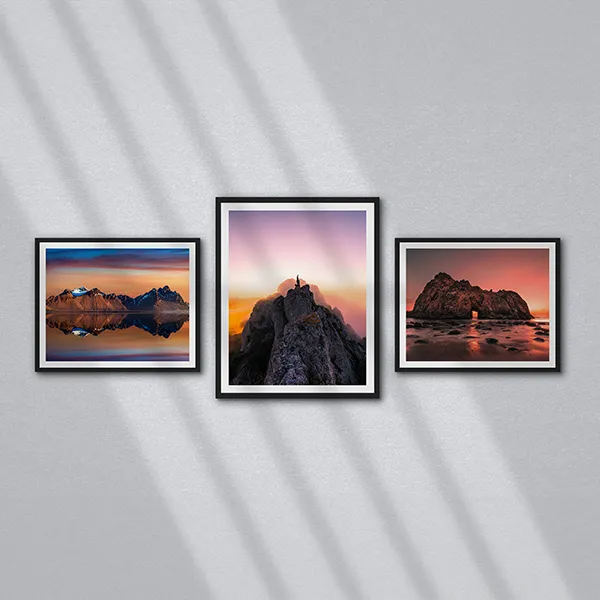
What is a Giclee Print?
"Giclee" is a French word that's pronounced "zee-clay." These prints are high-quality and known for their unbeatable longevity. The process of giclee printing is a little different than other printing processes. It works in much of the same way that an inkjet printer does. Rather than dye, they use pigment inks. These can achieve vivid colors with high-accuracy, providing a higher image detail than traditional photographic printing. This is what makes this printing process so loved.
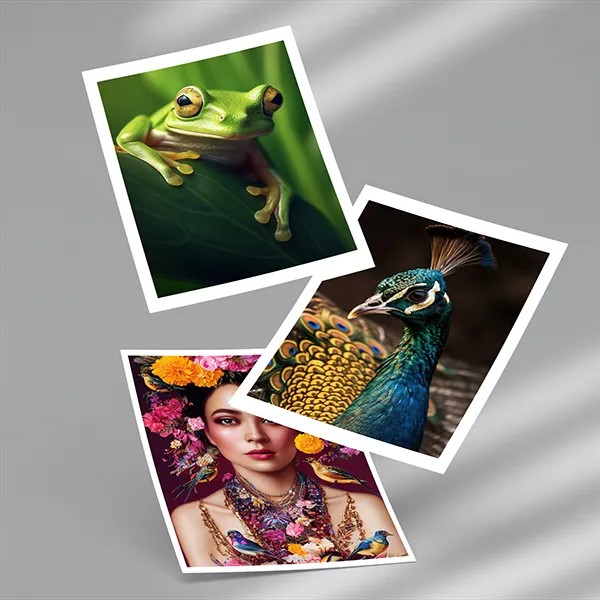
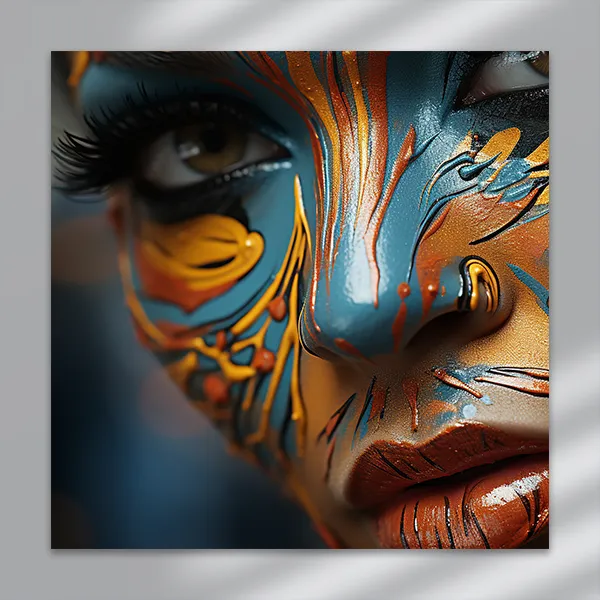
Powerful Details
The Latest Technology For Your Prints on Fine Art Paper. The premium print using Epson UltraChrome Pro pigments ensures the finest tonal gradation. Twelve colors provide all the nuances and emphasise every detail. Pictures are reproduced at an ultra-high resolution of 1,440 dpi. Extremely long-lasting color that is true to the original.
Custom Frames
Elevate Your Fine Art Print With Custom Frames. Photos on fine art paper are particularly high-quality. To protect your picture add an additional personal touch, you can also have your print framed. We offer four frame colors. Wall-mounts for hanging pictures in portrait and landscape orientation are included.
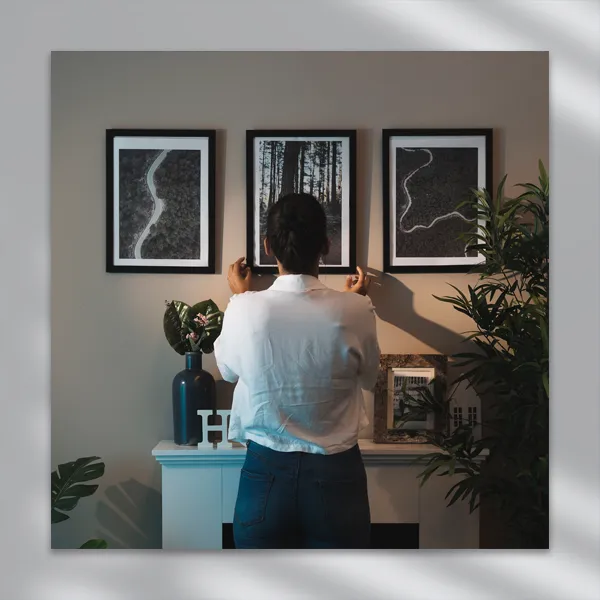
The Artist's Choice For Beautiful Museum Quality Photo Prints
Perfect For Art Work, Weddings, Landscapes, Wildlife Photography, etc,.

Archival Paper

Finest Quality Pigment Print

Can be Framed
The Ultimate Guide to Giclee Print: Quality and Techniques Explained
Introduction to Fine Art Prints
- Fine art prints, including giclée prints, offer a way for art lovers to own high-quality reproductions of original artwork.
- Giclée printing is a technique used to produce fine art reproductions with exceptional colour accuracy and detail.
- The term “giclée” originates from the French word “gicleur,” meaning “to spray,” which describes the inkjet printing process.
Read more
Introduction to Fine Art Prints
- Giclée printing involves using an inkjet printer to spray ink onto paper, creating a high-quality fine art print.
- The process requires careful selection of materials, including pigment-based inks and archival paper, to ensure longevity and colour accuracy.
- Giclée prints are often used to reproduce original artwork, photographs, and other images with exceptional detail and colour.
The Benefits of Giclée Prints
- Giclée prints offer a range of benefits, including exceptional colour accuracy, detail, and longevity.
- They are a cost-effective way for artists and photographers to reproduce their work, making it accessible to a wider audience.
- The printing process can be customized to meet the specific needs of the artist or photographer, allowing for a high degree of creative control.
Caring for and Preserving Art Prints
- Giclée prints require careful handling and storage to preserve their quality and longevity.
- They should be kept away from direct sunlight, moisture, and extreme temperatures, which can cause fading or deterioration.
- The prints should be framed or mounted using archival materials, such as acid-free paper and UV-filtering glass, to prevent damage and preserve the print.
- Regular cleaning and maintenance can help to extend the life of the print and prevent damage or deterioration.
The Difference Between Digital and Giclée Printing
- Digital printing refers to the use of digital technology to produce prints, including inkjet printing and laser printing.
- Giclée printing is a specific type of digital printing that uses inkjet technology to produce high-quality fine art prints.
- The main difference between digital and giclée printing lies in the quality and longevity of the print, as well as the materials and techniques used.
- Giclée printing is a more specialized and high-end form of digital printing, requiring careful attention to detail and a deep understanding of the printing process.

